
© Jeff Busby. (Click image for larger version)
Houston Ballet
Romeo and Juliet
★★★★★
Melbourne, State Theatre
30 June 2016
www.houstonballet.org
www.artscentremelbourne.com.au
The first thing to say about Stanton Welch’s Romeo and Juliet, made for his Houston Ballet and presented in Melbourne by the Australian Ballet, is that it tells the story of those star-crossed lovers in an immensely human way. Although Welch’s choreography relies on a quite formal classical vocabulary, there is nothing formal or stereotyped about how we see and understand the characters. The human element triumphs and every character is an individual. This is in no small part due to the extraordinary commitment of Houston Ballet’s dancers, from principals and soloists to corps de ballet. Led by Karina Gonzalez as Juliet and Connor Walsh as Romeo, every dancer in the company executes the choreography with stunning success, and they all act out their parts strongly and convincingly. The ballet gives the audience so much to admire, so much to be immersed in, and so much to delight in and even laugh over.

© Jeff Busby. (Click image for larger version)
In terms of the narrative, Welch’s Romeo and Juliet introduces some new elements, new to balletic productions that is, while still keeping very close to the Shakespearian storyline. There are, for example, three Houses rather than the traditional two. The House of Escalus joins those of Montague and Capulet, and Mercutio (Jared Matthews) belongs to the House of Escalus, as does Juliet’s suitor, Count Paris (Ian Casady). Romeo’s close male friend from the House of Montague, Benvolio (Oliver Halkowich), is joined by another male friend, Balthasar (Derek Dunn). Friar Lawrence (Steven Woodgate) is joined by Friar John (Rhodes Elliott), whose major job is to deliver Juliet’s letter to Romeo telling of her plan to drink the potion given to her by Friar Lawrence. And in a move to make clear why Juliet’s letter doesn’t arrive, we see Friar John delayed by victims of a plague that is ravaging Verona, a scene that takes place downstage before a front curtain with Friar John tending to the sick and dying while still holding the letter in his hand.
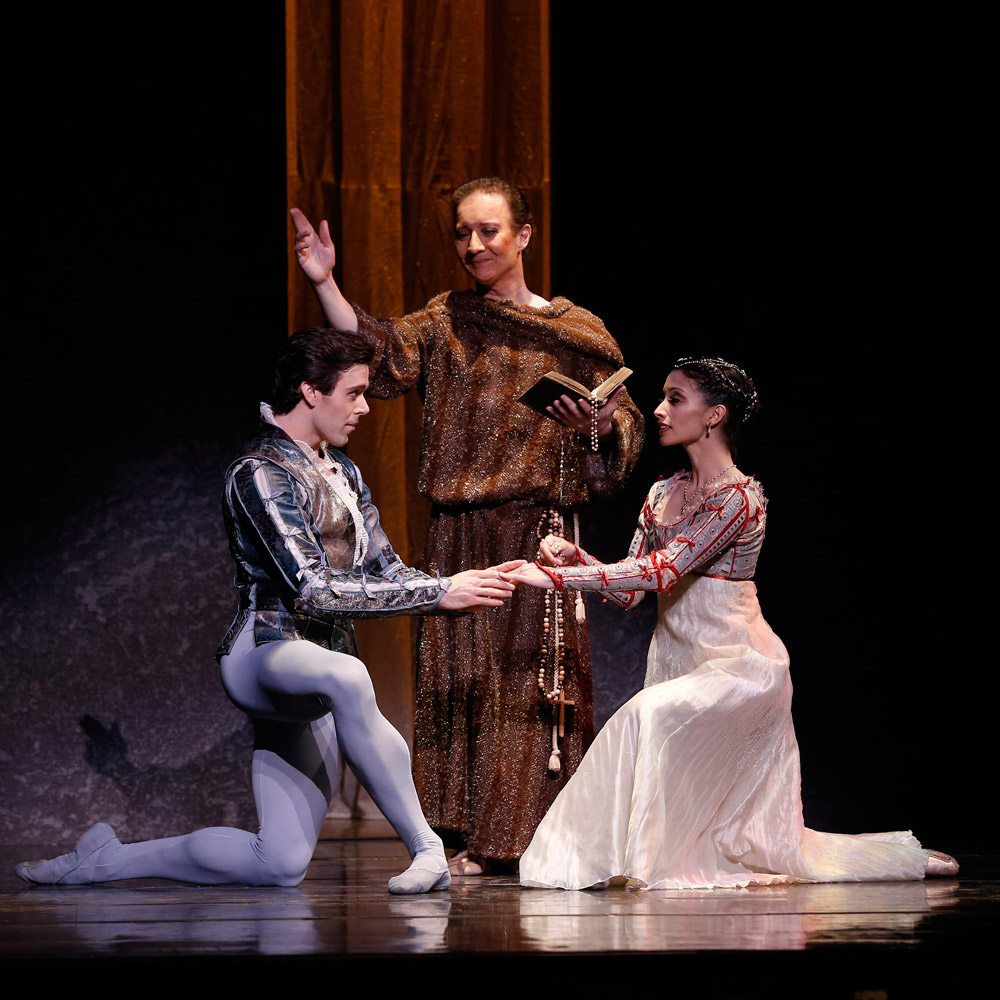
© Jeff Busby. (Click image for larger version)
Choreographically one of Welch’s greatest strengths lies in his ability to work with large groups. At crowded moments, such as the market and carnival scenes, everyone seems to be doing something different and yet nothing looks messy and nor does it look over-programmed. I also found the group dances in the ball scene thrilling. Gone was any sign of that famous Russian-style ‘cushion dance’ for the men and women attending the ball. It was replaced by rows of dancers lifting their arms upwards, executing pirouettes, tours en l’air and the like, sometimes simultaneously, sometimes row by row. While I have always loved the familiar stylised approach to the dances at the ball, and will continue to do so, Welch gives the scene a kind of playfulness that is, in its own way, equally as absorbing to watch. He puts the characters into a situation where they are enjoying themselves, even as a sense of intrigue begins to fill the air as Romeo and Juliet start to fall in love. Then, tempering that emerging sense of drama, are some moments that are full of humour. Benvolio and Balthasar are deliciously wicked as they parody the older and more serious characters, including Paris. And the two friends are quite drunk by the end of the ball.
The juxtaposition of drama and intrigue with pleasure and playfulness continues as the story moves along. There is one especially gorgeous moment during the carnival scene where Romeo is drawn into a game of Blind Man’s Buff with a group of children (students from the Australian Ballet School). The choreography here is so simple and yet, almost unbelievably, quite exciting. But of course the sword fight between the Capulets and Montagues soon takes over resulting in the dramatic deaths of Mercutio and Tybalt (Christopher Coomer).

© Jeff Busby. (Click image for larger version)
Beyond the crowd scenes, Romeo and Juliet had some lovely swirling pas de deux to perform. They were choreographically unexceptional but beautifully danced by Gonzalez and Walsh, whose excitement and passion came across so strongly that any perceived lack of choreographic innovation was the last thing to worry about. Similarly, Romeo’s friends, Benvolio, Balthasar and Mercutio, had fairly predictable choreography to perform. But, whether in their solos or when they danced together, they performed with such gusto that those steps looked breathtaking. I was also interested in the way Welch frequently used the arabesque to stress a point. There were many moments, often between just two people where one would lean forward towards the other, grasp an arm or shoulder and execute a powerful arabesque. It was almost an exclamation mark!
Costumes were nicely conceived by Roberta Guidi di Bagno, intricate but not overwhelmingly so, and the definition of the three Houses by colour – red for Capulet, blue for Montague and brown for Escalus – was well thought through. The sets with their multitude of turreted towers were perhaps not my favourite aspect of the production, although the dramatic fall of a blood red silken cloth at the end of Act II was stunning, as was the minimally designed Capulet crypt, beautifully lit by Lisa J. Pinkham. Ermanno Florio, musical director of Houston Ballet, conducted Orchestra Victoria and brought, at least to my ears, a new and exciting meaning to the Prokofiev score.
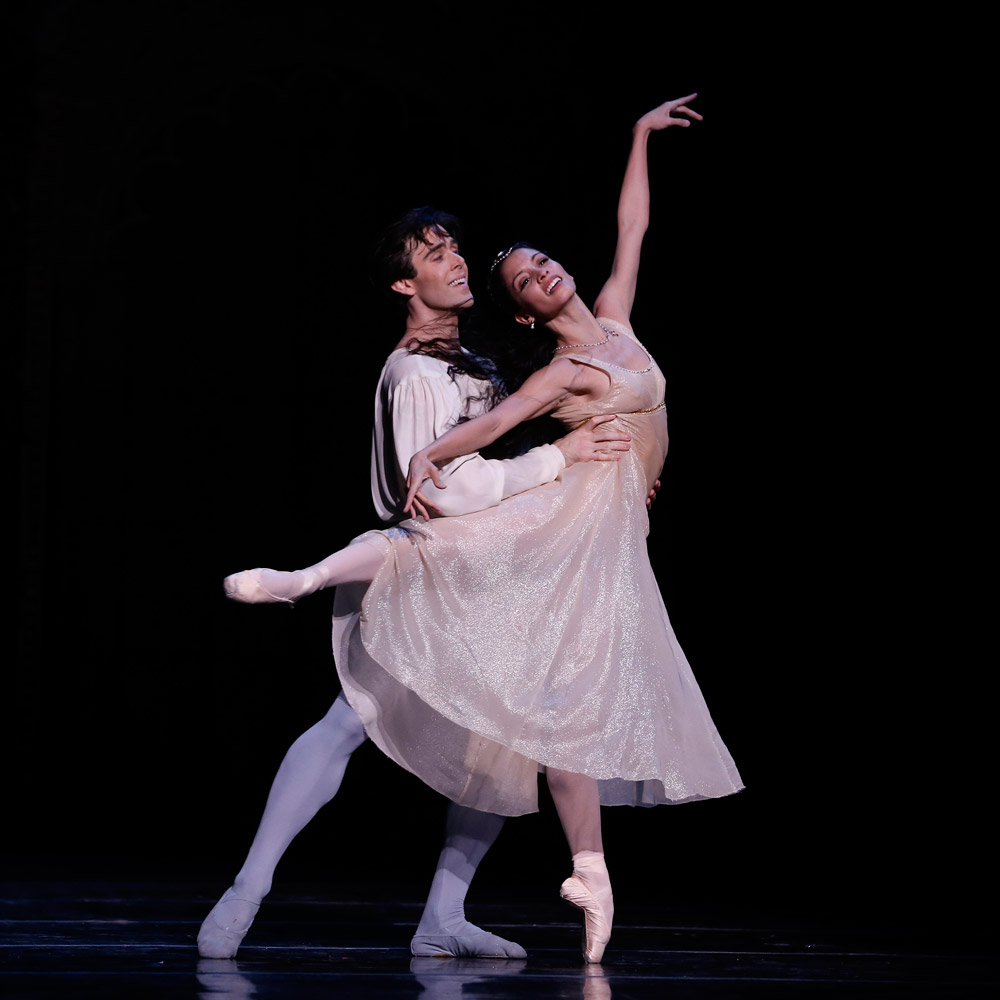
© Jeff Busby. (Click image for larger version)
In an interview prior to his Romeo and Juliet opening in Melbourne, Welch admitted to being nervous about how the work would be received in Australia. ‘Everyone is so Cranko there,’ he told a reporter. Well yes, many Australian dance-goers were brought up on the Cranko production, a great favourite during the directorship of Maina Gielgud. But he need not have worried. Welch’s Romeo and Juliet is a triumph of theatricality and storytelling that deserves repeated showings until it becomes as familiar and as loved as productions by Cranko, MacMillan, Neumeier, Murphy and others whose productions we may know and enjoy.











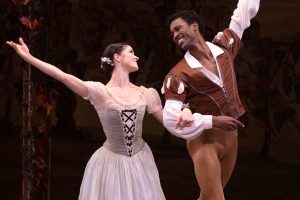
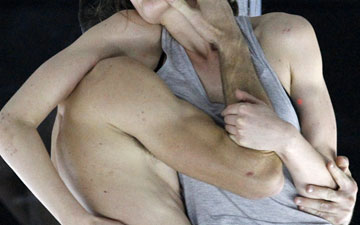

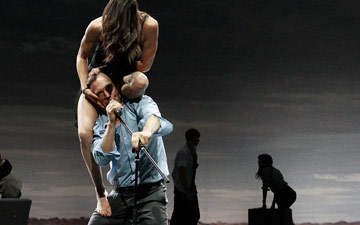
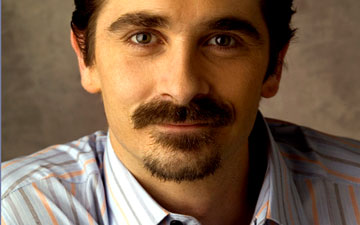
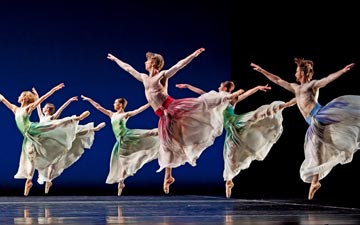
You must be logged in to post a comment.